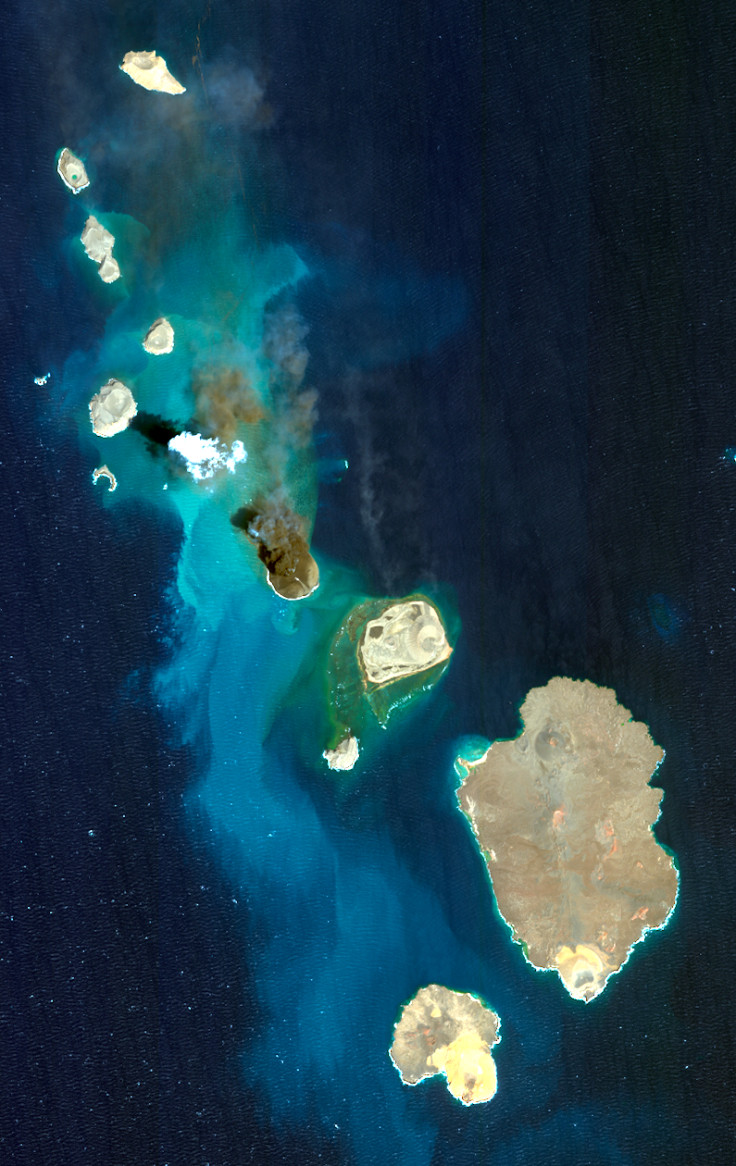Two volcanic islands emerge in Red Sea 'that will last for centuries'
Two volcanic islands have appeared in the Zubair archipelago in the southern Red Sea that will likely "last for centuries", scientists have said.
The two islands were formed during two short explosive volcanic eruptions in 2011 and 2013 and both grew rapidly during the initial eruptive phases. They also occurred at the same time as several local earthquake swarms that often accompany magma intrusions.
Publishing their findings in the journal Nature Communications, the scientists from the King Abdullah University of Science and Technology in Saudi Arabia said the appearance of the volcanoes shows the region is far more volcanically active than was thought. Indeed, the study suggests that the Zubair archipelago could be part of a previously unrecognised volcanically active zone.
"Earthquake activity has been affecting the southern Red Sea for decades, suggesting the presence of a magmatically active zone that has previously escaped notice," they wrote.
The formation of volcanic islands – particularly ones along mid-ocean ridge systems – are not well understood. The researchers used remote sensing techniques to show how the two islands were fed by two fractures filled by magma, known as dykes.
Models of the ground deformation on neighbouring islands suggest the dykes are about 10km in length – far longer than the size of the islands would suggest.
In an email interview with IBTimes UK, the authors Wenbin Xu, Joël Ruch, and Sigurjón Jónsson, said the islands are similar to Nishinoshima Island, which formed off the coast of Japan in 2013.
"Although the tectonic settings in the Red Sea and Japan are different, the magmatic processes involved in the Zubair archipelago and on Nishinoshima Island are comparable," they said. "The main difference is the eruption duration and the type of volcanic activity: The Zubair eruptions lasted only one to two months and were limited to explosive activity, whereas the Nishinoshima eruption started in 2013 and is still ongoing. It started with an explosion phase followed by an effusive eruption producing lava flows."
While volcanologists say the volcanic island in Japan could last indefinitely, the study authors believe the latest two will be around for at least a few centuries.

"The two new islands have shown different erosion rates within the first few months and years following the eruptions. The smaller Sholan Island dramatically decreased in size by 30% within the first two years and after that the erosion rate decreased substantially.
"The larger Jadid Island has not suffered as much erosion, as it seems less exposed to strong ocean currents. The islands are composed of unconsolidated materials that over time become cemented tuff resistant to erosion. The islands will thus likely last for centuries."
They also said that life could "certainly" appear on the islands, with plant life expected to develop from seeds carried by birds and ocean currents. However, they also note that other islands in the archipelago have limited vegetation because of the arid climate.
The "rifting episode" believed to be taking place in the southern Red Sea is probably in its later stages – indicated by the appearance of the islands. However, it is not clear as of yet whether the episode is over: "It is difficult to tell whether or not more islands are likely to appear in the next months or years," the scientists said.
"Although the archipelago is remote and not near populated areas, it is located near an important maritime route, so the main concern is probably that larger eruptions could affect ship traffic."
© Copyright IBTimes 2025. All rights reserved.






















